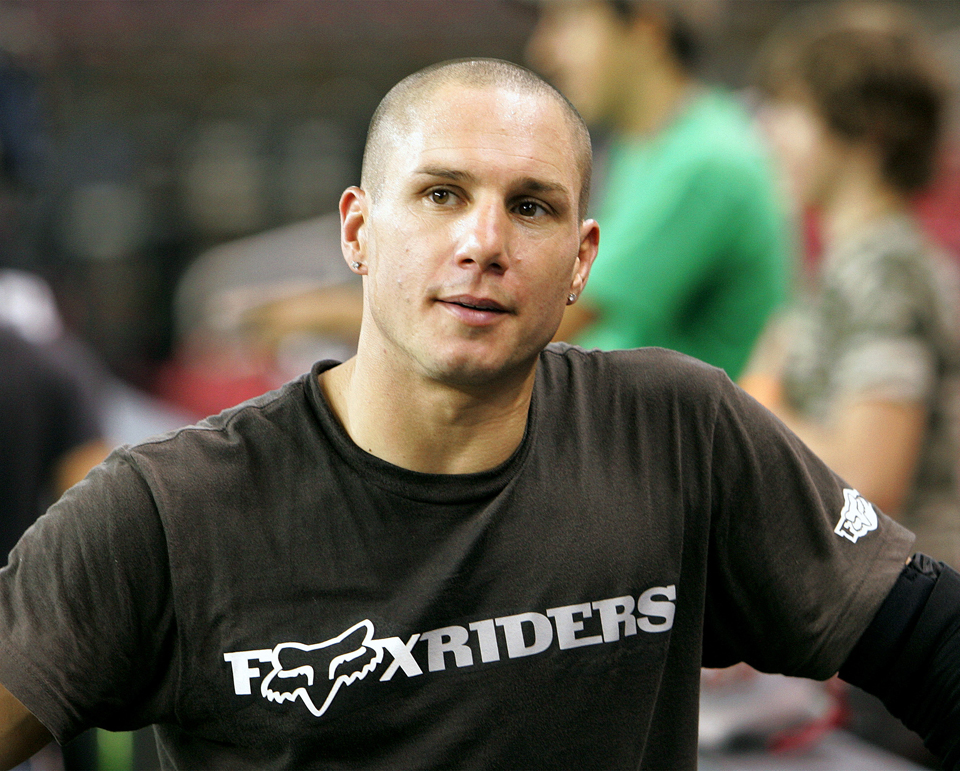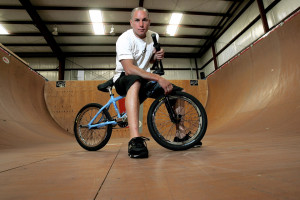

By Joseph Guzy | Photo Editor
Very few athletes rise to the top of their respective sport – effectively defining themselves as a generational talent, perhaps even the best at what they do. A few of those said athletes will even find themselves in a video game one day. If they play a team sport, they’ll appear in quite a few of them. But only a very special breed of athlete can earn the honor of having a game named after them. Perhaps there is only one individual who was consistently better than any virtual reality version of himself.
Was.
Greenville, North Carolina Police found BMX legend Dave Mirra dead from what appeared to be a self-inflicted gunshot wound on Feb. 4. He was 41.
Though his familiarity with much of the “X-Games Generation” may be on a couple of PlayStation discs, no game could replicate the career of the aptly nicknamed “Miracle Boy.”
Mirra earned 23 medals in the X-Games since the tournament’s creation in 1995 through 2009: 14 gold, six silver and three bronze. He held the record for most X-Games medals until skateboarder Bob Burnquist surpassed him in 2013, four years after Mirra’s last BMX contest. It took a multi-sport athlete in snowboarder and skateboarder Shaun White to surpass Mirra’s gold medal total in 2013.
Aside from the accolades, Mirra was arguably the most down-to-earth superstar of extreme sports. Instead of joining the empire of adrenaline junkies on the West Coast, Mirra turned the hometown of his formative years, Greenville, North Carolina, into the mecca of the BMX world. Fellow two-wheeling athlete Ryan Nyquist led the pilgrimage to Greenville in the late ‘90s and many others soon followed, earning the city the title of “Protown” in the BMX community.
His down-to-earth personality extended well beyond the confines of the competition floor and even his personal empire in North Carolina. It extended far enough to reach myself.
Tony Hawk’s Gigantic Skatepark Tour came to Woodstock, Illinois, when I was just 12 years old. My mom and aunt rounded up all of my extreme plastic-ramp jumping friends, and we headed an hour north from my home in Chicago. Though the bill was obviously loaded with skateboarders, Tony decided to bring Mirra as the premier cyclist for that leg of the tour.
We made it just in time for the athletes to come off of the bus, struggling to identify each of the skateboarders carrying their decorated pieces of wood. However, it was no challenge to spot the clean-shaven head of Mirra with his Haro bicycle making his way to the ramp-filled warehouse.
Forced to wait outside for most of the “street” portion of the tour, the park let the rest of us in for the half-pipe demonstration. We pushed and shoved our way to the barrier, and I found my wide-eyed, 12-year-old self face to face with my heroes.
Some acknowledged the crowd with an impersonal wave, while others threw stickers and T-shirts into the sweaty crowd of kids. But one athlete stopped and acknowledged my waving hands accompanied by a request.
“Dave! Do a flair!” I screamed at the “Miracle Boy” himself.
“I’m not so sure I can do that with the ceiling,” Mirra said shrugging while looking up.
Still, I was sure that if anyone was going to do a backflip with a 180-degree spin thrown in the middle on that scorching summer afternoon, it was going to be him.
Mirra put on his full-face, motocross style helmet and walked his bike up to the top of the ramp. The best in BMX history proceeded to put together a run of tail whips, no-handers and even a 540-degree rotation.
Just when I thought all hope was lost, Mirra hit the near half of the half-pipe without doing a trick – a clear indication that he was getting ready for something big on the other side.
There it was. One full backflip while rotating 180-degrees midair. The screams of preteen boys would rival those of the girls at a One Direction concert.
That alone could be the ultimate story of my youth, but we’re talking about Dave Mirra.
After finishing his run, Mirra walked along the barrier scanning the crowd. Dozens of kids reached out for a high five, and he obliged. When it was my turn, he didn’t just slap my hand with a tattered cycling glove. He said something.
“How was that?” Mirra said, having clearly fulfilled my request. He gave me a pat on the shoulder and headed back up the ramp.
That was Dave Mirra.
According to friends and family, Mirra had been under a spell of depression since retiring from competition. It’s understandable to see why someone who formerly flew his bicycle 20-plus feet in the air would have a huge void to fill in their life. Others have brought up that, while extreme sports athletes are very well protected, CTE could have very well played a part in his demise.
Since many big names of the X-Games era are still relatively young, there is little known about the possible consequences of fall after fall after fall. The full result of Mirra’s tumbles could have very well gone undetected beyond the removal of his spleen, lacerated liver and countless knee and ankle injuries.
Regardless of the reasons, the entiresports world lost a once-in-a-lifetime athlete in Mirra far too soon. Perhaps in the celebration of Mirra’s life, it is best summed up by Frank Farley, Professor of Psychology at Temple University, who was quoted in a 2001 documentary showcasing Dave Mirra and Ryan Nyquist titled “Miracle Boy and Nyquist.”
“[Extreme sports athletes] have a wish to live, a desire to live,” Professor Farley said. “The reason they take the precautions is so they’ll have another exciting day.”




